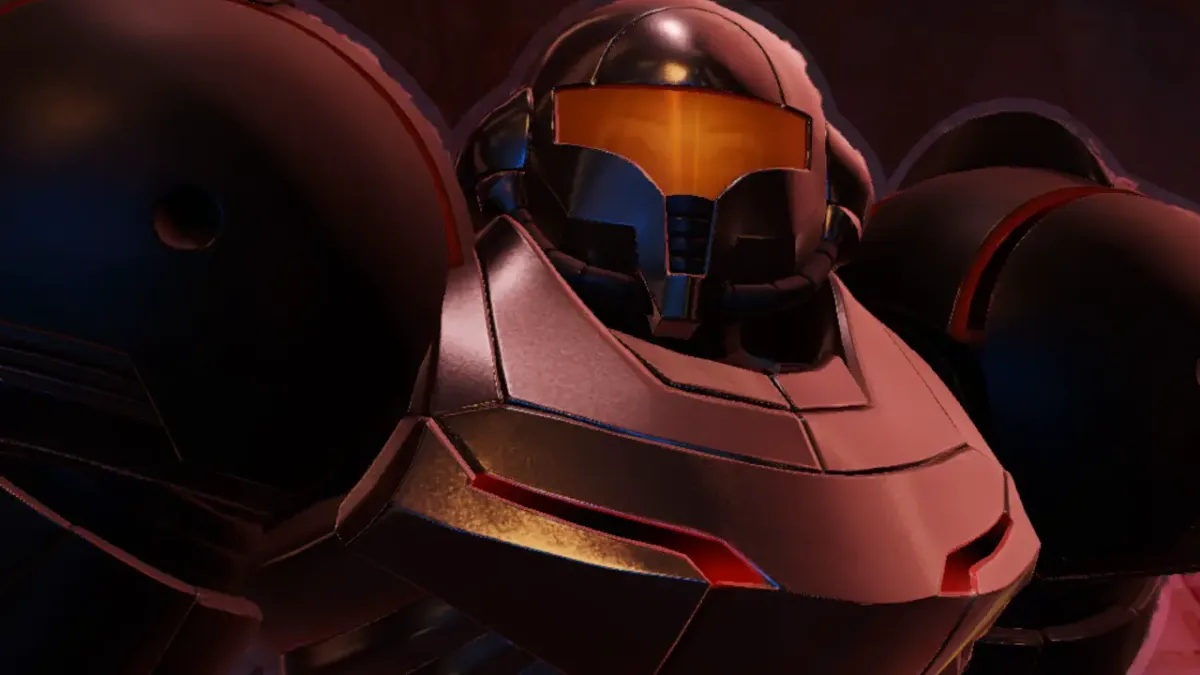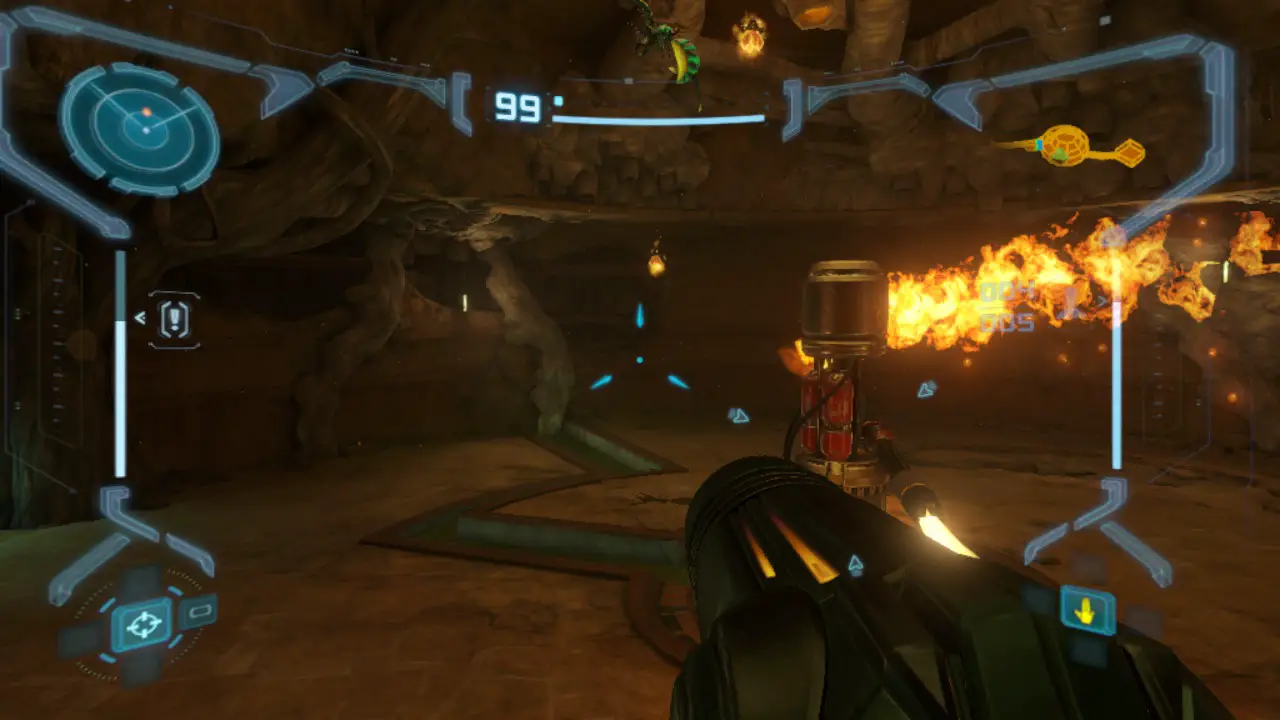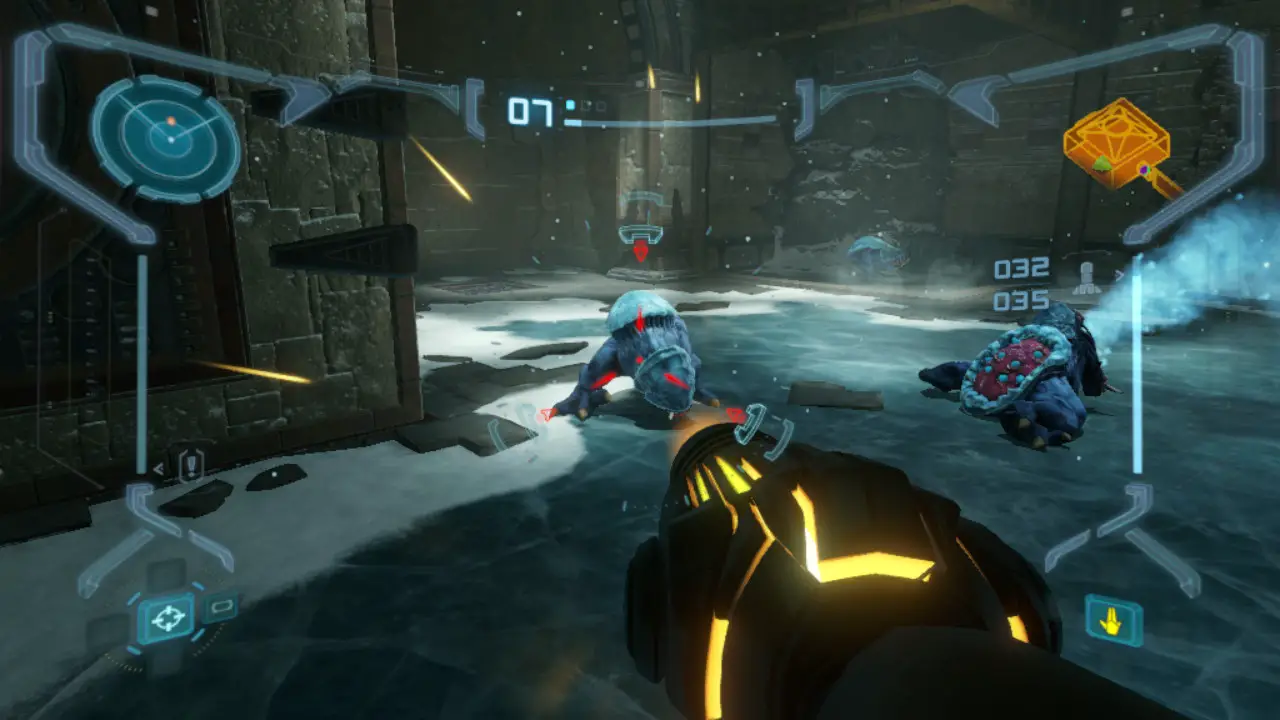
Metroid Prime by Nintendo and Retro Studios is regarded as one of the greatest games ever made. When it first launched in 2002, it received critical and commercial success, being lauded as a step forward in the FPS genre. If you’ve read my Metroid Dread review, you’ll know that despite several attempts, that was the first game that really got me into the series. Before that, I had tried the original NES title, Super Metroid, Metroid Fusion, Metroid Prime Hunters, Other M, and even Metroid Prime. Oddly enough, as a game more focused on action, I enjoyed Other M the most out of that list. Blasphemy, I know. Playing through Metroid Prime on my Wii U, I absolutely despised the experience. The controls were clunky, combat was awkward, and platforming only worked about half the time. Still, as a student of game design, I saw it through to the end. Despite that experience, I jumped at the chance to give the game another shot with the surprise announcement and release of a remaster on Nintendo Switch. And let me tell you, I’ve finally seen the light.
Metroid Prime follows Samus Aran as she explores the planet Talon IV. Formerly colonized by the Chozo race, their civilization is now in ruins and the Space Pirates have moved in, mining a dangerous resource called Phazon. After losing her gear while taking out their ship, Samus needs to explore Talon IV, power herself up, and find a way into a meteor’s impact site to end the Phazon threat.
The game is very light on story, and you’ll only get that much through the constant use of Samus’ scan visor. Visors are the big thing Prime brings to the table, aside from the new perspective. Using the D-Pad, you can swap between four visors to learn more about your environment, fight enemies, and solve puzzles. The Combat Visor is your standard viewpoint, while the aptly named Scan Visor allows you to scan certain objects to learn more about them at the cost of not being able to fire your beam cannon. Holding ZL will normally lock on to targets, but it becomes your scan button here. Scanning everything you possibly can is very important here, as some switches can only be activated through a scan and you’ll learn crucial information through Samus’ notes. Making constant use of the visor, by the end of the game I had only logged about 80% of all scannable objects, so you really need to break it out constantly.
Your other two visors are more situational, though still see near-constant use. The Thermal Visor allows you to see heat signatures even through walls, while the X-Ray Visor also allows you to see through destructible objects. Some enemy types will only be visible through one of these two visors, which is interesting in concept but does make things very hard to see.

Despite the Remaster’s new Dual Stick control scheme, combat is still easily the worst part of Prime. But I’m getting ahead of myself; I played through the entire game on this new control scheme and it made for a far better experience than the Wii remote. Just like any First Person game you’d find today, you move with the left stick and adjust your viewpoint with the right. You can also enable gyro aiming for that extra precision, which is always welcome. ZL is used for locking on, while A/ZR fires your beam weapon. R will fire a missile, while B/L jumps and Y toggles Morph Ball mode. To swap beam types, you hold X as a sort of shift key then select a beam with the D-Pad.
If you’ve played the game before, you’ll instantly notice a small issue with the control scheme: beams and missiles are on the same finger. To fire Super Missiles, you need to charge a shot by holding ZR, then press R while still holding the button to shoot. Thankfully, in what feels like a first for a Nintendo game, Prime Remastered comes with a fairly robust options menu. It doesn’t hold a candle to other AAA offerings, but baby steps. You can swap certain buttons around, such as having R serve as shift select and X used for missiles, though I played through most of the game by the time I discovered this and couldn’t retrain my muscle memory. You can change between beams and visors for standard D-Pad selection, adjust camera sensitivity in all directions, allow free aim while locked on, and choose between three other control schemes including the Wii’s pointer mode, classic GameCube controls, and a Hybrid mode using Gyro. All of these work in portable mode too, though aside from nostalgia I wouldn’t want to use any mode other than Dual Stick.
While the controls and options are great and make the game a whole lot more accessible and enjoyable, it can still be clunky at times. A problem in many first-person games is platforming since you can’t really see where you’ll land and where you’re going at the same time. The Phazon Mines area in particular is a headache to get through since you need very precise jumps, double jumps, and grapples, the last of which only works sometimes. Still, it is better than the Wii version and I wouldn’t expect a remaster to fix design issues.
What I would expect from a remaster would be the option to toggle lock-on, which sadly isn’t here. Combat basically requires locking on in every instance, especially boss fights, and my finger would often get tired of holding the button down constantly. Dodging is only accessible through holding lock on, strafing, and pressing the jump button. This also doesn’t work consistently, so most fights come down to a DPS race. I really would have preferred dodge to be on its own button like L for example, because as it is you’ll be taking a lot of avoidable damage.

My biggest gripe with combat is the color-coded enemies. Later on in the game, some foes like the Space Pirates or even Metroids are only vulnerable to one beam type, shown by their primary color. I’ve never played a game where this feature wasn’t annoying, and it’s no better here. You’ll even need to fight multiple colors of enemies at once, which devolves into a tedious process of eliminating one color before moving on to the next. The remaster of DMC: Devil May Cry fixed this by allowing you to damage enemies with any type of attack, but a foe will take more damage from the correct type and that’s something I would have welcomed here. Especially with the Fission Metroids, who will divide and change colors if you don’t kill them quickly enough. It makes the back half of the game much more tedious than it should be.
In spite of those complaints, Metroid Prime Remastered is an amazing game. Exploring Talon IV is a treat, with rewards around every corner for the curious or creative player. The incredible attention to detail with things like Samus seeing her own reflection if an explosion goes off near you, the different hand symbols she uses for each beam as seen through the X-Ray Visor, how certain enemy types interact, or the interconnectedness of the map makes the game feel real and tactile. This is certainly a video game world that doesn’t feel like it exists outside of you, but those small details mask that almost completely.

Despite being labeled a First Person Shooter, Prime is mostly about solving puzzles and exploring – like a straight conversion of Super Metroid’s ideas to 3D. An observant eye goes a long way here, as things that may seem to be just decoration at first glance usually hold a secret or two. A symbol on a wall might need a scan to open a secret door, or blowing up a wall that looks slightly off may hide an energy tank or missile pack. You get out what you put into this game, which makes slowly acquiring a massive arsenal of health and missiles a ton of fun.
This remaster also offers a visual overhaul, and it looks absolutely gorgeous on Switch at a rock solid 60 frames per second, especially on an OLED. If I didn’t know this was originally on GameCube, I would swear this is a modern game, with excellent lighting, high-quality textures, and more added details. The only thing that gives it away is the comparative lower poly count, but if a game can look and run this good, frankly I don’t care. I really hope the other two games (as well as Prime Hunters possibly) get this treatment while we wait for Prime 4 because after experiencing this classic in a new way I want to give the rest of the series its fair shot.
Metroid Prime Remastered
Excellent
Metroid Prime Remastered is an amazing update to a classic game. Despite some remaining issues like clunky combat and platforming, the new control scheme and visual updates make this a must-play in the Switch’s library, even for those who didn’t enjoy the original. This is how you update a game for modern audiences.
Pros
- Amazing visuals
- Fantastic new control scheme
- Great attention to detail
- An actual options menu
Cons
- A few control issues remain
- Combat can be frustrating
- Color-coded enemies
